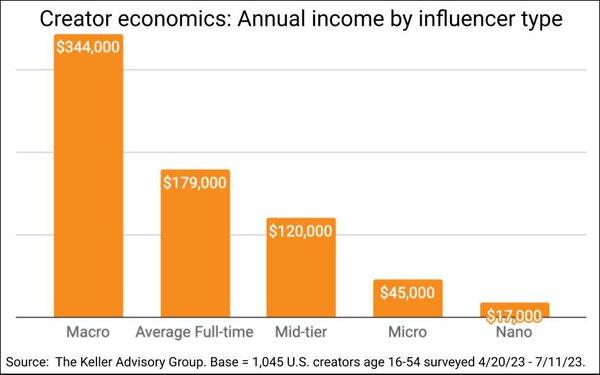As the global economy faces growing uncertainty, financial turbulence is rippling beyond traditional sectors, impacting even the digital realm of social media influencers. Once seen as a thriving and seemingly recession-proof industry, influencer marketing is now experiencing shifts that are reshaping livelihoods and online content. NPR explores how these economic challenges are unfolding in the influencer community and what changes audiences might notice as a result.
Economic Uncertainty Alters Influencer Marketing Strategies
The shifting economic landscape has led many influencers to rethink their approach to content creation and brand partnerships. As disposable incomes tighten and consumer confidence wavers, influencers are prioritizing authenticity and value-driven messaging over flashy promotions. Collaborations now often emphasize sustainability, practicality, and cost-effectiveness to resonate with audiences facing similar financial pressures. This means fewer extravagant product endorsements and more relatable, honest narratives that acknowledge the economic strain felt by many followers.
Brands and influencers are also diversifying income streams to mitigate risk during these volatile times. Micro-influencers, in particular, have seen a rise in demand due to their highly engaged niche communities, providing a more affordable and targeted marketing option for companies. Additionally, many influencers are leveraging subscription models, exclusive content, and direct-to-consumer sales to maintain financial stability. The table below outlines some key shifts in influencer marketing strategy observed over the past year:
| Strategy | Previous Focus | Current Trend |
|---|---|---|
| Brand Collaborations | High-ticket luxury goods | Affordable, everyday essentials |
| Content Style | Polished, aspirational posts | Authentic, relatable storytelling |
| Revenue Models | Sponsored posts and ads | Subscriptions & exclusive offers |
| Audience Engagement | Mass reach tactics | Niche, community-driven approaches |
Challenges Faced by Content Creators in a Shifting Digital Landscape
Content creators today find themselves navigating an unstable digital environment shaped by shifting algorithms, changing platform policies, and fluctuating ad revenues. Many influencers report unpredictability in audience reach as social media giants frequently update their feeds, making it harder to maintain consistent engagement. Additionally, the saturation of the market means creators are vying with an ever-growing number of peers, forcing them to constantly innovate while dealing with limited financial returns. Monetization models have become less reliable, with brand partnerships dwindling or focusing on short-term campaigns rather than sustained collaborations, which disrupts income stability.
Aside from revenue concerns, the pressure to produce continuous, high-quality content has intensified, often at the cost of creators’ mental health and personal boundaries. The increasing demand for authenticity conflicts with the commercial imperative to stay relevant and visible, causing many to struggle with burnout. Here’s a quick snapshot of the pressures they face:
- Algorithm dependence: Constant changes affect content visibility unpredictably.
- Monetization uncertainty: Sponsorships and ad revenue can be inconsistent.
- Audience fragmentation: Niche markets require more specialized content.
- Mental health risks: Stress from constant performance and public scrutiny.
| Challenge | Impact | Creator Response |
|---|---|---|
| Algorithm Updates | Unpredictable reach fluctuations | Diversify platforms & content types |
| Revenue Volatility | Income instability | Shift to merch & memberships |
| Market Saturation | Increased competition | Build unique brand identity |
| Burnout | Declining creativity | Implement wellness breaks |
How Audiences and Brands Are Adapting to New Influencer Realities
In the face of an unpredictable economy, both audiences and brands are recalibrating their expectations and strategies for influencer content. Consumers are growing savvier, seeking authenticity and transparency rather than just polished endorsements. This shift is prompting creators to emphasize genuine storytelling and niche expertise, rather than broad, lifestyle glamorization. Meanwhile, brands are adopting more cautious and data-driven partnerships, focusing on micro-influencers who foster tighter, more engaged communities. These changes reflect a movement toward sustainability over virality, where long-term relationships with followers are prioritized over immediate clicks.
The evolving landscape is also bringing fresh pricing models and collaboration formats to the forefront. Advertisers are preferring pay-for-performance deals, like affiliate commissions and bonuses tied to conversions, rather than flat fees. This approach benefits both parties by aligning interests, but it demands greater transparency and accountability in influencer metrics. Below is a simplified overview of emerging partnership trends:
| Trend | Description | Benefit |
|---|---|---|
| Micro-Influencer Focus | Smaller audiences, higher engagement | Better ROI for brands |
| Performance-Based Deals | Payment tied to sales/actions | Risk sharing between brands & creators |
| Authenticity Emphasis | Transparent, relatable content | Stronger follower trust |
| Long-Term Collaborations | Ongoing brand-influencer partnerships | Deeper brand loyalty |
In Summary
As the broader economy faces ongoing uncertainty, influencers are far from insulated. Fluctuating brand budgets, shifting consumer priorities, and evolving platforms all contribute to a complex landscape that impacts content creators worldwide. Observing these changes online offers a window into how economic pressures reshape digital influence, signaling that in today’s interconnected world, no sector operates in isolation. Moving forward, both influencers and audiences will need to adapt to this new reality, where economic turbulence plays out not just in traditional markets, but across social media feeds as well.
